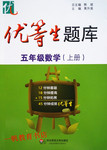题目内容
I don't think we should _______ our business in the present economic climate.
A. express B. explain
C. exhaust D. expand
练习册系列答案
 优等生题库系列答案
优等生题库系列答案
相关题目
题目内容
I don't think we should _______ our business in the present economic climate.
A. express B. explain
C. exhaust D. expand
 优等生题库系列答案
优等生题库系列答案